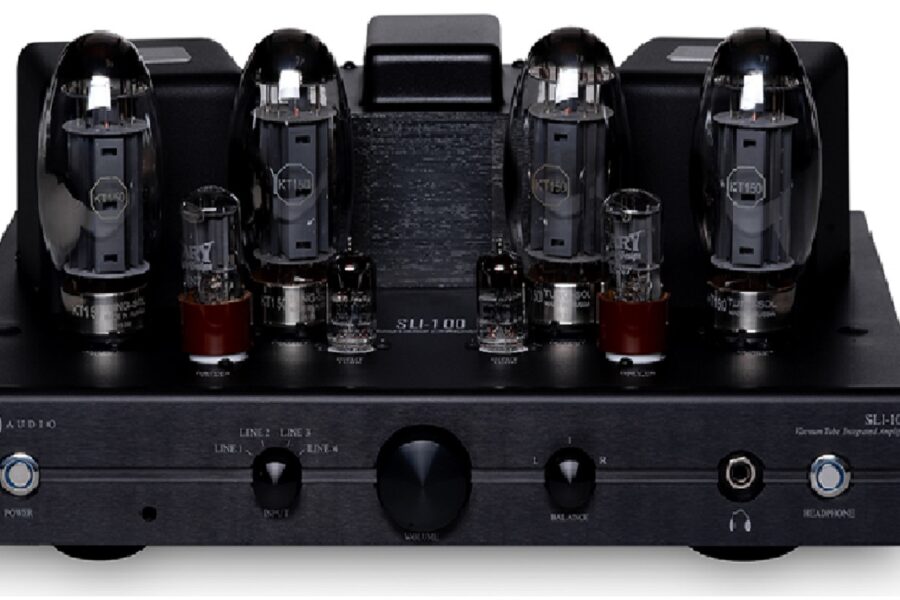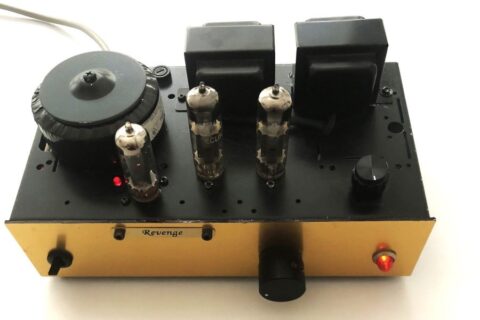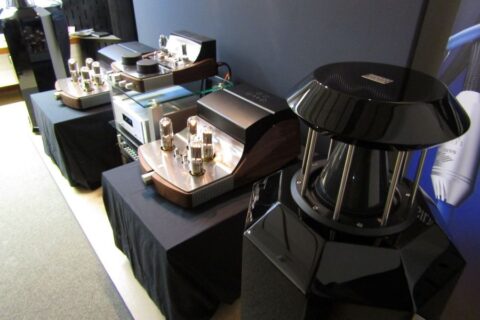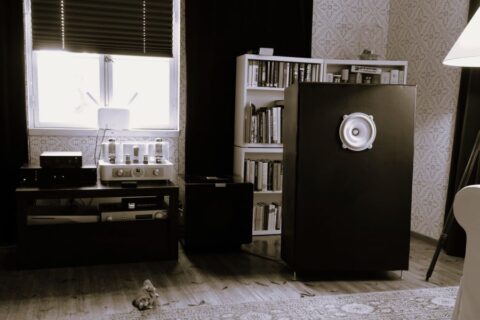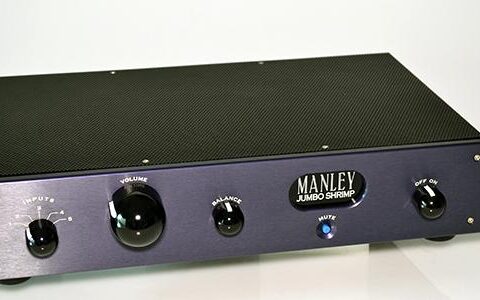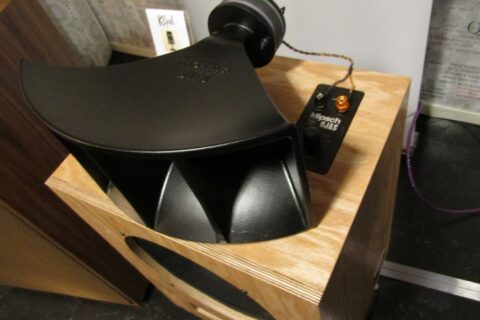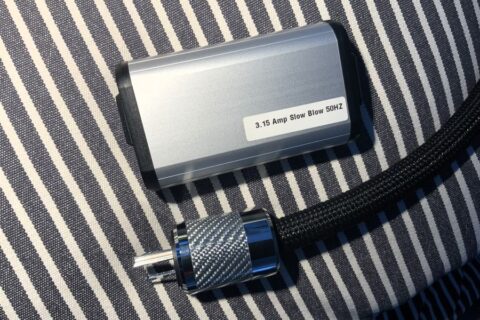Appears that the first KT beam tetrode was Marconi-Osram Valve KT66 from 1937, that soon, by virtue of its higher output power, begun to replace RCA’s 6L6’s in audio amplifiers. Most audiophiles remember the KT66 from the Quad II power amplifier from 1952, for example. The anode dissipation was 30W, which meant 30-40 watts of output power in a push-pull Class AB1 amp with a reasonable level of distortion. Twenty years later, in 1958, GEC/M-OV introduced a more powerful version of the KT66 tube, the KT88. The 550 V max anode voltage went up to 800 volts and the anode dissipation was 42 watts delivering closer to 50 watts in Class AB1 PP amplifier (100 watts of peak power). The KT88 quickly became popular in commercial push-pull tube amplifiers, along with the EL34 or 6550. The original KT66 or KT88s are hardly available any more, but the tube is still manufactured under different brand names in Russia (Genalex Gold Lion and Electro-Harmonix), Slovakia (JJ Electronic) and southern China (Hengyang Electronics, Psvane).
The KT90 is a case of its own. It was developed, as a high quality replacement for the KT88, by Blagomir Bukumira for the Yugoslavian Elektronska Industrija Niš, or Ei, in the late 1980s. With anode dissipation of 50 watts, it gave around 15% more power than the KT88 in Class AB push-pull amps. When the Ei factory became dysfunctional during the Yugoslav war in the early 1990s, enthusiasts from Central Europe rushed to Serbia with empty suitcases to save what could be saved, and above all to grab the last quality Ei-RC KT90s for themselves. As far as I know, at least some succeeded.
Another twenty years passed until around 2010 a new power tube, the KT120, entered the market. It was designed by Russian Valeri Krivtsov and his team, and was manufactured by the American Electro-Harmonics (New Sensor) under the Tung-Sol brand in the Saratov plant. The tube fit directly into conventional KT88/KT90 circuits, but with 60 watts of anode dissipation was significantly more efficient. Due to its subjectively stronger bass performance, many manufacturers abandoned the 6550/KT88/KT90 in favor of Tung-Sol’s KT120, even though it required a new OPT and AC transformer.
The rest is history. About five years ago, New Sensor (Electro-Harmonics) introduced an even more powerful version of the KT120, Tung-Sol KT150, with 70 watts of anode dissipation and 200 watts of peak power (about 100 watts in a Class AB PP amplifier). The tube went directly into standard KT88/KT90/KT120 circuits. And, just as the KT-150 was beginning to gain fame as the most powerful power vacuum tube in the universe, New Sensor released the Tung-Sol KT170 with an incredible 85 watts of anode dissipation (20% more than the KT150), providing, in a Class AB push-pull amp, 130 watts of output power (> 100 W output power in Class AB push-pull designs), and 70 watts triode connected! At least half a dozen manufacturers have already seized the opportunity to insert the mighty KT170 into their new more powerful tube amplifier designs.
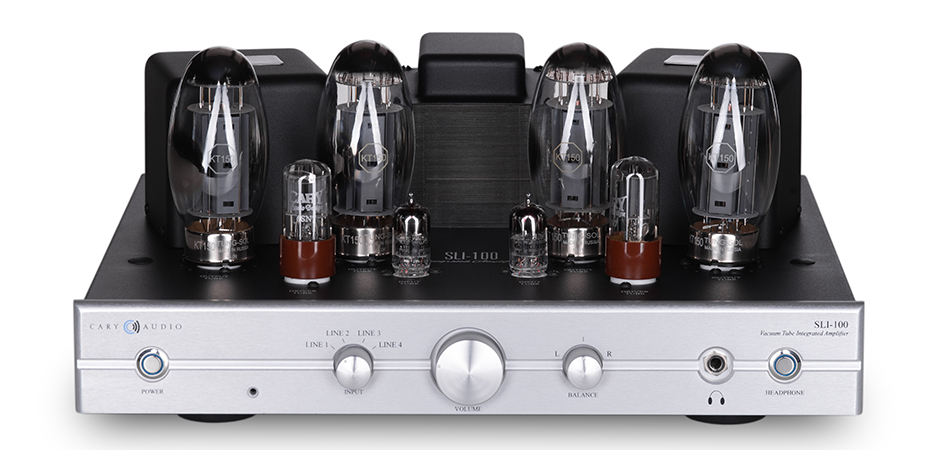
WHAT’S SO KINKY ABOUT THEM?
One of the manufacturers that make use of Tung-Sols new powerful output tubes is Cary Audio. Cary Audio is not a giant actor like Audio Research, VTL, or McIntosh, but it is an important link in the story of American tube amplifier manufacturing being among the first ones that introduced the non-feedback Class A single-ended 805/300B/211 triode amplifiers to Americans. This happened already in the 1900s, when the SET amps were already commonplace in Japan and Central Europe, but apparently relatively rare in the States. Today, Cary Audio manufactures Hi-Fi electronics on a wide front, from network players to transistor amplifiers, but has not forgotten tube amplifiers either. The collection includes two PP stereo amps: the SLI-80HS with two pairs of KT88s at the output, and the SLI-100 with modern power tetrodes, the KT150.
Before we delve deeper into the latter, let’s remind ourselves why the KT is KT and not just a beam tetrode. Unlike a triode, a tetrode has a second grid between the control grid and the anode, so called screen grid. The function of the screen grid is to protect the control grid from the effect of the anode’s electric field and accelerate electrons from the cathode towards the anode. Compared to a triode, a tetrode achieves higher output power with the same anode supply voltage. Very early on it so happened that at an anode voltage lower than the screen grid voltage, say, below < 70V, the electrons from the anode’s secondary emission ended up on the screen grid, increasing the screen grid current and reducing the anode current. The negative resistance shows up in the anode voltage/current curve as a “kink,” which disappears when the anode voltage approaches and exceeds the screen grid voltage. The unstable operation was solved by changing the anode structure, and the tube was renamed as Kinkless Tetrode, and thus the entire KT family of tubes was born.
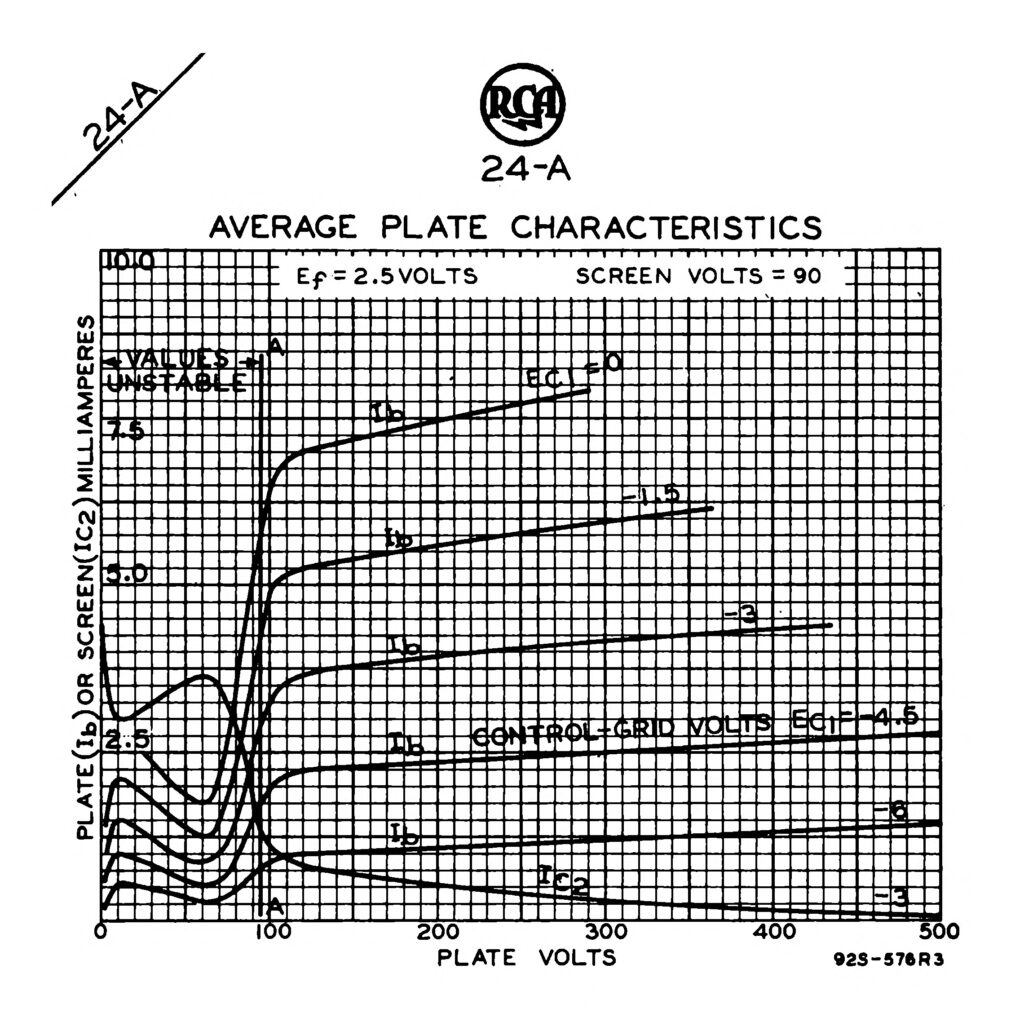
PUH-PULL AMPLIFIER WITH POWER TETRODE
With the tube hood on, the Cary Audio SLI-100 looks like a monolith. Under the hood hides a sleek and good looking 20 kg heavy integrated amplifier with four abnormally shaped KT150s on the bow. The tube’s shape is explained by better heat dissipation and insensitivity to microphonics. The KT150 does not require a high anode voltage (<500V), but draws a lot of current (200…250 mA), which is transformed into the output power with a transformer. According to Cary Audio, the output transformers, turned slightly inward, are specially designed for the SLI-100, but it does not specify the manufacturer. Behind the OPTs are large Elcos.
The front panel has all that is needed: a volume control, a source selector, and the ever-useful channel balance control. All of these work smoothly. There is a 6.3 mm headphone output and a switch that switches the SLI-100’s output from speakers to headphones. On the back are four line inputs (RCA), an output impedance switch (4/8 ohm), a subwoofer output, and polarity-preserving speaker terminals. The inputs and switches are symmetrically located on both sides of the power transformer, which speaks for the dual mono structure of the output stage. Like all Cary Audio amps, the SLI-100 doesn’t feature a printed circuit board or boards, instead the components are directly soldered to each other.
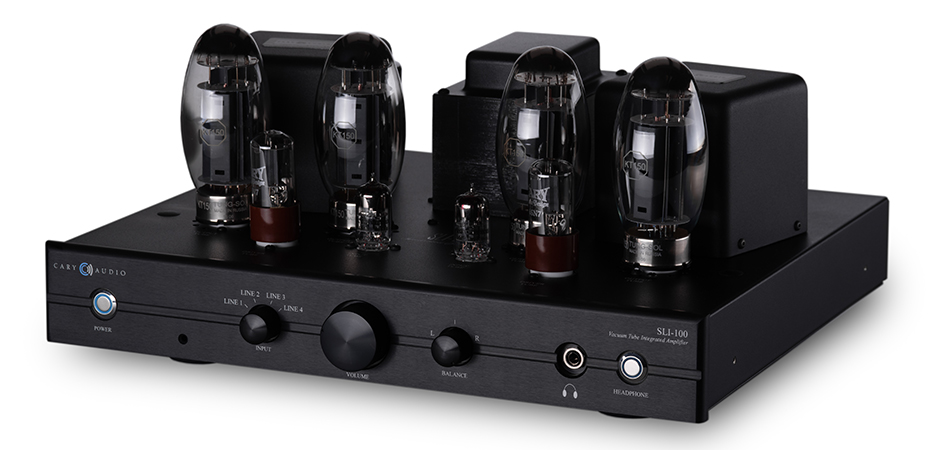
UNIQUE FRONT END
The input signal from the volume control is said to be directly connected to the first grid of the 6922 without coupling caps in the signal path. The preamplifier circuit itself is an SRPP-type (Series Regulated Push-Pull) Class A voltage amplifier implemented with a 6DJ8/6922 dual triode (ECC88). From there, the signal goes directly to the 6SN7 driver/phase inverter, which divides the signal phase to the push-pull output stage using the so-called split-load principle (the total output resistance is divided into two parts for the anode and cathode). This choice for the SLI-100’s front end is not totally unique, even though there would have been more conventional solutions. In tube amps especially the implementation of the preamp section is equally relevant to the end result (sound quality) than the the output stage with its output transformers and the like.
The output transformers of the SLI-100 are Ultralinear or partially triode-connected. In an Ultralinear circuit, the tetrode’s screed grid is fed by an intermediate tap of the output transformer’s primary, the tap being somewhere between a standard tetrode (screen grid directly connected to the operating voltage) and a triode (screen grid connected directly to the anode). The result is a mix of better linearity of triodes and better efficiency of tetrodes. Many UL amps, Cary’s own SLI-80HS included, have a switch to select between Ultralinear function or a pure triode, but the SLI-100 lacks one. This is a kind of shame, because a pair of KT150s would have given a handsome 50 watts of output power per channel in a triode mode. There’s some negative feedback, but only 4 dBs, to arrive at an optimal trade-off between noise floor, distortion and bass control.
The manufacturer claims 100 W output power per channel in Class AB1, but without mentioning the distortion. The noise/hum is stated to be 82 dB (max. continuous power), and the frequency response at full output power is 19 Hz – 23 kHz (+/- 0.5 dB). The input impedance is 100 kilo-ohms.
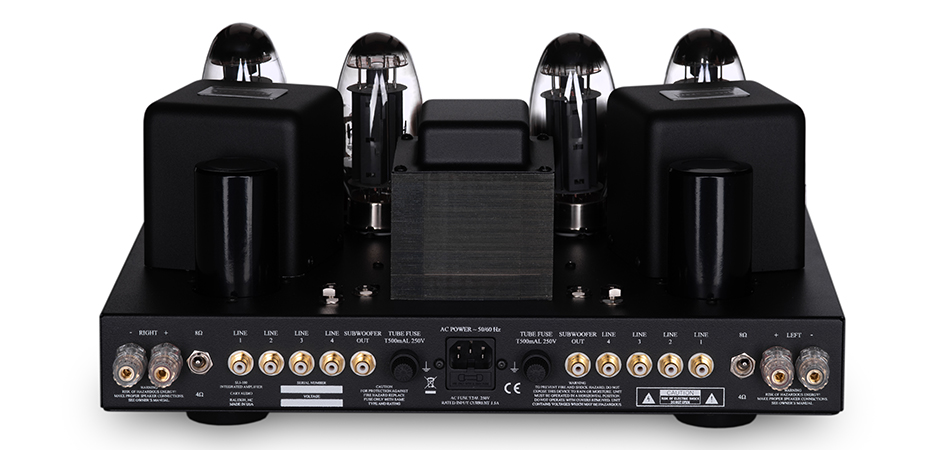
A SOUND WITH UNUSUAL QUALITIES
So how did the amplifier, which had more than 100 hours of break-in prior to the test, work with the speakers in a real life? I tried four different speakers (small and large, sensitivity between 85 – 92 dB, impedance > 6 ohms) in four different locations, and in terms of ability to drive speaker loads the SLI-100 performed remarkably well, by which I mean no sign of sluggishness or slow reaction what so ever. Also, no lack of power, not even in an abundantly acoustically treated listening environment. But that (the sense of power) is only one side of the coin. The other side revealed a completely new quality of the sound that I don’t remember having heard in a tube amp the since the early 1990s when I started playing with tube amps. What I have particularly in mind is the sound’s overexcitement, nervousness, tension, … don’t know what to call it … very high energy, like a bow tuned to its maximum. As if the amplifier had been programmed to turn off the EGR and DPF in order to get more horsepower. Step on the gas pedal, and the sound would shoot up, without a stress, and leaving enough kick for even the strongest percussion sounds without an overdrive. In my mind I associated this feature with the TungSol’s power tetrode (KT150), but surely the whole thing is what matters. This quality or impression permeated all listening, and kind of overshadowed the amp’s performance in the bass region, which was convincing by all standards. The other extreme of the playback range was also appropriately reproduced leaving the midrange transparent, and producing a spatial effect that only tube amplifiers can do.
I especially enjoyed how the SLI-100 kept the music rhythmically together whether rhythm music with plenty of sudden movements and syncopated rhythm, or slower orchestral music with no actual rhythm section, which is why staying in the pulse of the music is all the more important. The SLI-100 is an exceptional talent in this regard, and that’s not a small thing. I also appreciated how the amp distinguished and illuminated small details and nuances of the music, from the strings of a lute to the breathing sounds of a singer. Only one amplifier went even further in the immateriality of the sound, and that was a 1.5 watt Single-Ended Class A amplifier.
Cary Audio’s SLI-100 is no doubt an universal tube amplifier, but two situations come to mind in which it could be particularly recommended. One is where a speaker that on paper does not require lots of power turns out to be a real power sucker in real life situations. If this is the case, many start thinking about getting an efficient transistor amplifier instead of a tube amplifier. No need anymore: the SLI-100 brings a welcome alternative from the world of tube amps. The other concerns classic British loudspeakers such as Tannoy, Fyne, Harbeth, Spendor, Wharfedale, ProAc, Rogers etc. for which the SLI-100 could be a perfect match in view of power and sound (suitably neutral without being mechanical or grayly cold).
With 8000 euro price the SLI-100 is not cheap, and one starts finding some tough competitors, such as the VTL IT-85, EAR-Yoshino V12, Audio Research I/50, Octave V70 SE, Jadis I50, Cayin CS-170I and others, many equipped with Tung-Sol power tetrodes. Even so, I can honestly say that the Cary Audio SLI-100 is one of the most impressive commercial tube amplifiers I’ve come across for a long time whose resolution and authority leave no room for criticism, but makes one wonder to what extent the secret, the magic, lies in the new types of power tetrodes. And when will we see the first SE amp realized with the KT150 or KT170?
SPECIFICATIONS
Cary Audio SLI-100
Type: Integrated Stereo Amplifier
Tubes: 2 x 6922 (preamp), 2 x 6SN7 (driver/phase shifter), 4 x KT150 (output)
Output Power: 2 x 100 W, push-pull, ultralinear, ab1 class
THD + N: –
Input Sensitivity: 0.45 V
Input Impedance: 100 kilo-ohms
Noise/Hurricane: 82 dB (max. continuous power)
Frequency Response: 19Hz – 23Khz (+/- 0.5 dB)
Output impedance: 8/4 ohms
Voltage gain: 34dB
Channel separation: –
SNR: 82 dB
Analog inputs: 4 x rca
Analog outputs: 1 x subwoofer-out
Dimensions (W x D x H): 200 x 440 x 405 mm
Weight: 20 kg
Price: 8000 €
mgy-europe.com


